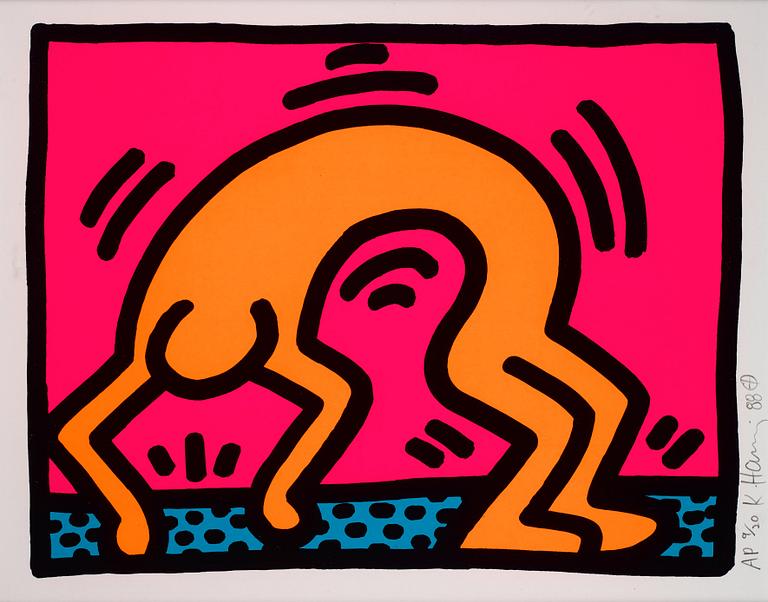Keith Haring
”Pop Shop II (B)”
Screenprint in colour, 1988. Signed K. Haring and dated 88 and numbered 9/20 AP. Published by Martin Lawrence Limited Editions. I. 26.5 x 34 cm.
Muut tiedot
Very few artists have come to define an era and place like Keith Haring. His distinctive expression, strongly influenced by the emergence of graffiti, tells of the dynamic and unique cultural environment that was surfacing in lower Manhattan, New York, during the 1980s. Haring was a pivotal part of this world where different cultures, sexualities and social classes were able to meet and collaborate together. He not only made an impression in the prominent art galleries of the time, but also in the world of music and fashion, and even today his art captures new passionate collectors.
Keith Haring himself has described his work with the words:
"The images are part of the collective consciousness of modern man. Sometimes they stem from world events, sometimes from ideas about technology or people changing roles in relation to God and evolution. All of the drawings use images that universally “readable”. They are are often inspired by popular culture."



































